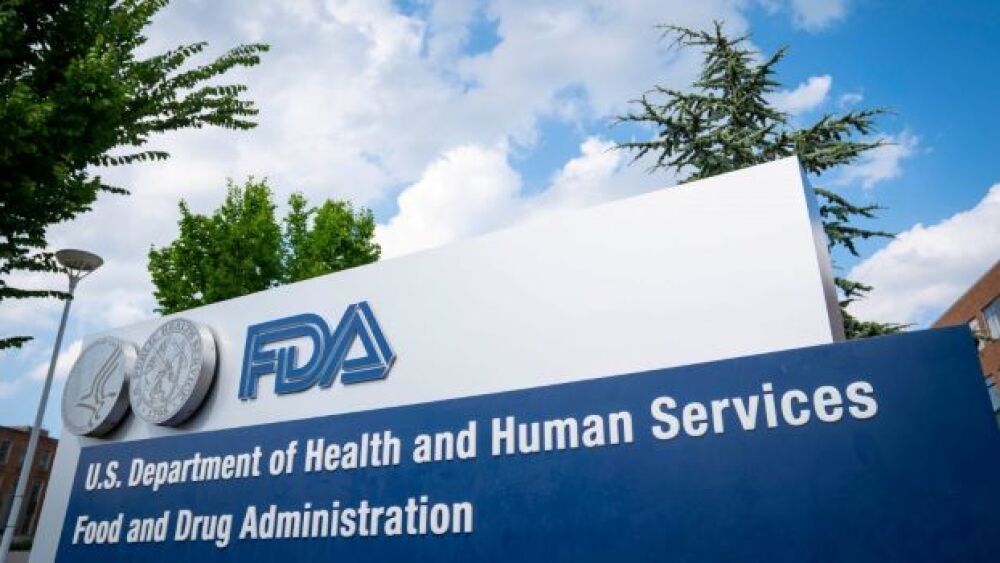The FDA declined approval for Amryt Pharma’s therapeutic oleogel-S10. The topical gel is intended to treat a group of rare skin diseases called epidermolysis bullosa.
Amryt’s epidermolysis bullosa treatment got rejected by FDA. (Sarah Silbiger/Getty Images)
Amryt Pharma received a complete response letter from the U.S. Food and Drug Administration (FDA) declining approval for its therapeutic oleogel-S10. The topical gel is intended to treat a group of rare skin diseases called epidermolysis bullosa.
In June 2021, the FDA accepted and granted priority review to Amryt’s New Drug Application for oleogel-S10. The topical gel is an herbal medicinal product that contains birch triterpenes from birch bark, which is intended to speed up the healing of skin wounds in people with epidermolysis bullosa.
The therapeutic works by accelerating wound closure through the effects of birch triterpenes on inflammation and epithelialization during wound healing. The natural properties of birch bark can influence all three phases of wound healing and allow skin cells to migrate more rapidly to wound closure.
Timeline of Epidermolysis Bullosa Therapeutic
In November 2021, the FDA extended the review of Amryt’s therapeutic to allow time to review additional analyses of data previously submitted by the company. The FDA also issued a new Information Request at the same time regarding existing study data to continue its evaluation of oleogel-S10.
Now, the FDA has denied approval of the drug and has asked Amryt to submit additional confirmatory evidence of effectiveness for the gel in its use for epidermolysis bullosa. In response to the decision, Amryt intends to discuss with the FDA the nature of the data required to address its concerns.
“We are extremely disappointed by this decision, and we remain committed to our goal of bringing Oleogel-S10 to patients. EB is a devastating disease with no approved treatment options and the EB community is desperate for a therapy. The EASE study was the largest randomized clinical trial ever conducted in this disease and the first Phase III study to meet its primary endpoint. We are committed to working collaboratively with the FDA to identify the most expeditious pathway towards a potential approval for this important therapy,” said Dr. Joe Wiley, CEO of Amryt.
The EASE trial represents a patient population from 28 countries with epidermolysis bullosa wounds. 223 patients were enrolled in the trial including 156 pediatric patients with a primary endpoint of comparing oleogel-S10 versus a placebo gel in the closing of a target wound within 45 days of treatment.
In results published in July 2021, Amryt stated that the primary endpoint was met with statistical significance and that oleogel-S10 increases the probability of wound closure in patients to 44%. Additionally, patients treated with the gel experienced a reduction in pain when dressing wounds, a greater reduction in total body wound burden, and represented an acceptable safety profile and was well tolerated.
Patients living with the condition are in urgent need of a solution, as there are no current FDA-approved treatments for the condition. Individuals with epidermolysis bullosa experience skin tears, blisters and wounds that lead to severe pain, disfigurement, and external wounds that may never heal without intervention. In more severe forms, life expectancy can be cleaved to 30 years of age.
Several other companies are working hard on solutions for patients. Although not yet recruiting, BioMendics is in the process of beginning a clinical trial to assess the efficacy of its therapeutic TolaSure, a topical gel intended to promote accelerated wound healing.
Lenus Therapeutics is recruiting for a Phase II clinical trial to assess the efficacy of its topical gel RGN-137 intended to reduce the area of index wounds. Beyond topical gels, the use of botulinic toxin is being used in clinical trials to assess its use in limiting the occurrence of blisters in epidermolysis bullosa.





